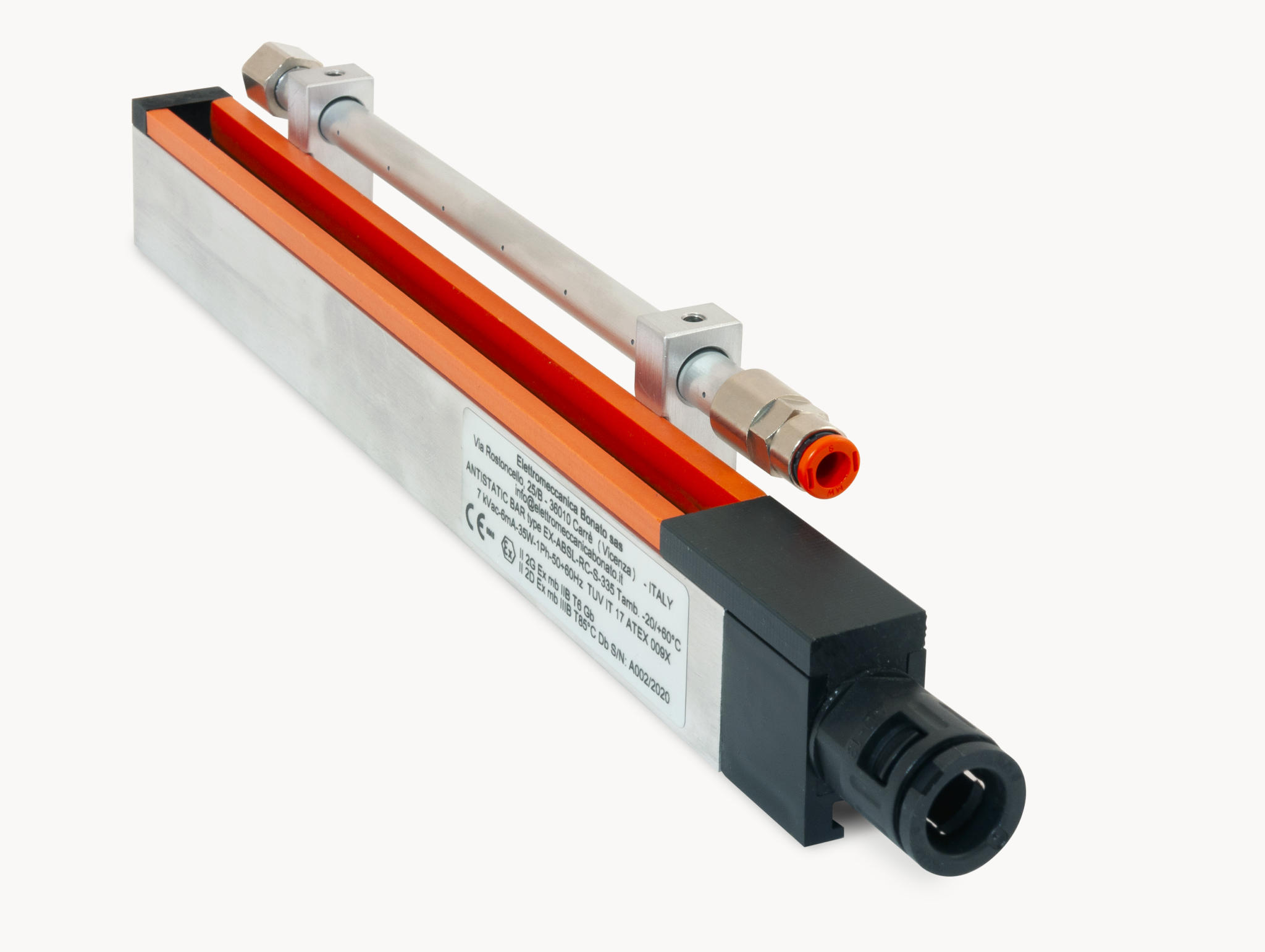What antistatic bars are and what they are used for
Antistatic bars are devices used to neutralize static electricity. This is done even while machines are working at full capacity, thus eliminating all the problems that static electricity can cause to production.
But let’s take a step back and try to better understand what issues we are talking about – those that antistatic bars successfully solve. Many industrial companies, e.g. those involved in the processing of neutral materials such as plastics, paper and textiles, share an insidious problem: the buildup of static electricity.
This happens because neutral materials, when processed at high speeds, become negatively or positively polarized due to friction. Production machines reach very high speeds, and the electrical charge agglomerates in increasing amounts. This phenomenon results in a dangerous buildup of electrostatic energy, which affects industries as diverse as textiles, pharmaceuticals, food and packaging.
But what concrete problems does this buildup trigger?
- Disruptions to materials processing
- Accumulation on the product of dust suspended in the environment
- Electric shocks to operators
- Decreased product quality, thus increasing production waste
- Damage to the materials used
- Fires and explosions of dust and vapors
In short, it is clear that the damage caused by electrostatic energy is extensive and must be absolutely limited through the use of antistatic bars.
The operation of an antistatic bar
At this point it is natural to want to know more about how antistatic bars (also called ionizing bars) work. Thanks to them, in fact, all the problems that the presence of electrical charges creates for the manufacturing industry are eliminated.
This is an electro-chemical process. The air surrounding the point in the machinery where the electrical charge is concentrated is ionized. This means that, in order to work, antistatic or ionizing bars must be placed directly in the affected area.
To understand the operation of an antistatic bar, one needs to know that frequently machined materials are insulators; this means that they are more sensitive to the accumulation of electrical charge but cannot discharge it to the ground because they lack conductive properties. In order to neutralize the charge remaining in the material, the atoms in the air must be broken down into positive ions and negative ions.
The operation of antistatic bars is to transport the electrical charge to a group of emitters, thus creating an agglomeration of energy that gives rise to a great many positive and negative ions-capable of neutralizing the polarity of any surface.
Examples of antistatic bars
At Elettromeccanica Bonato, we are committed to producing the most useful and efficient bars for the production fabric. We also make them to measure, to meet 100% of the specific needs of your production sector.
Any concrete examples of antistatic bars?
The ABSL-RC antistatic bar (shockless) can be used in different sectors such as textile processing, paper, plastic, or even in printing and packaging.
The bar has strong electrostatic charge elimination power, making it ideal for installation in machines working at high speed.
Our ABSL-RC-AKM antistatic bar has a dual function as it is coupled with an air blade, which amplifies by 30 times the flow of compressed air used, thereby achieving a large energy saving of electricity used to produce that air. It is also ideal for drying and cleaning surfaces.
Designed to be used in a variety of sectors, the IDB-11 antistatic bar (shockless) has a built-in power supply and, therefore, does not require high-voltage cables. Among Elettromeccanica Bonato’s antistatic bars, this is one of the most compact and is available in two versions.




















